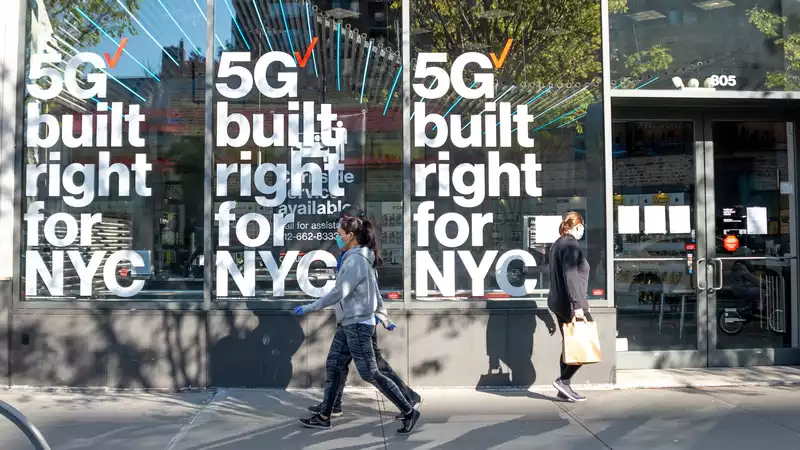If you've gotten one of the best 5G phones in the past year, you're not alone in wondering, "Where's the 5G speed?" According to several new reports, it is only natural to feel disappointed with what 5G has offered so far.
A recent report released this week from OpenSignal examines the progress of 5G networks around the world and paints an overall positive picture. The independent testing firm concludes that the mobile experience with 5G has improved in multiple countries and that mobile users are enjoying better video experiences with 5G in more places than a year ago.
However, digging into the numbers, 5G performance in the U.S. is not necessarily attracting people to knock down the doors of their local cell phone retailers to get their hands on the latest 5G devices: according to OpenSignal, overall download speeds in the U.S. have risen to 26.7 Mbps, and the U.S. is the fastest country in the world for 5G download speeds, 5.4 Mbps increase one year after 5G was introduced. This is higher than the United Kingdom (up just 1.1 Mbps in the past year) and on par with Australia (up 5.6 Mbps). However, Japan, Switzerland, and Qatar all saw download speeds increase by more than 7 Mbps thanks to 5G. South Korea and Qatar followed close behind, improving by 6.6 Mbps and 6.7 Mbps, respectively, over the past year.
OpenSignal's figures show an even greater gap between the U.S. and the rest of the world when watching video over 5G. The testing company evaluates the video experience and assigns a rating to each country, with a score of 75 or above qualifying as "excellent"; seven of the 20 countries where 5G has been launched have reached this score, but the US is not one of them. The U.S. score of 56, which ranks as "very good," lags behind the other G7 countries.
Earlier this month, OpenSignal released another report detailing how the US lags behind other countries in 5G download speeds: in seven of the eight major countries that have adopted 5G, the new network standard is faster than Wi-Fi. To make matters worse, the average 5G download speed in the United States is 52.3 Mbps, 85.8 Mbps slower than the next slowest country, the United Kingdom. The U.S. could double its average 5G download speed and still not catch up.
This comes as no surprise to anyone who has been following the coverage of 5G progress. Earlier this year, another network testing company, RootMetrics, found that in some places in the US, 5G actually offers slower speeds than 4G LTE.
The cause of this is not necessarily the 5G technology itself, but rather the way U.S. carriers are deploying 5G networks. So far, carriers have used two approaches in building 5G: high-speed millimeter wave technology or low-band spectrum, which prioritizes coverage over speed.
T-Mobile's 5G network takes the latter approach, and as a result, the uncarrier can boast a nationwide network that covers the largest areas and people. However, T-Mobile's 5G speeds are only slightly faster than the carrier's LTE network at this time; AT&T is building a nationwide AT&T 5G network using low-band spectrum, with the goal of coast-to-coast coverage by mid-year.
mmWave is being used for the initial buildout of Verizon's 5G network, which includes 34 cities and many sports stadiums (which are sitting empty at the moment thanks to the coronavirus outbreak and restrictions against large gatherings). These towers offer 1 Gbps download speeds, often touted as a key benefit of 5G, but their reach is not very wide and is usually limited to outdoor coverage, as mmWave signals cannot penetrate physical structures.
(Verizon has just been criticized by the national advertising arm of the Better Business Bureau National Programs, which has told Verizon to be more explicit in disclosing information about the limits of 5G coverage and to stop advertising "the most powerful 5G experience in America.") and stop advertising that it is "the most powerful 5G experience in the U.S. "Verizon agrees with the former, but has filed an objection to the latter with the National Advertising Review Board).
5G performance in the U.S. will improve as carriers upgrade their networks and incorporate mid-band spectrum along with low-band and mmWave technologies, using the mid-band spectrum T-Mobile acquired as part of its merger with Sprint, coverage in both Philadelphia and New York City with the full range of 5G. Verizon also plans to expand its 5G coverage over the course of 2020 to allow its network to cover larger areas.
Right now, however, 5G may be considered overhyped and under-explained. Wireless carriers, hardware manufacturers, and technology writers (including our own) have focused so much on what 5G will ultimately enable that they have sacrificed explaining the path from here to there. Hopefully, the overwhelming numbers we are seeing from 5G so far will lead to a better explanation of what we can expect as more 5G phones reach more people.
.









Comments